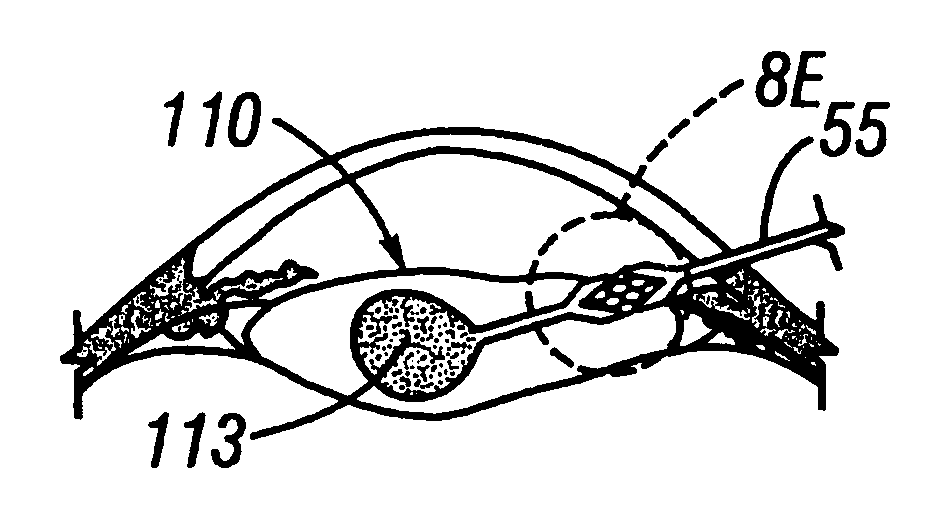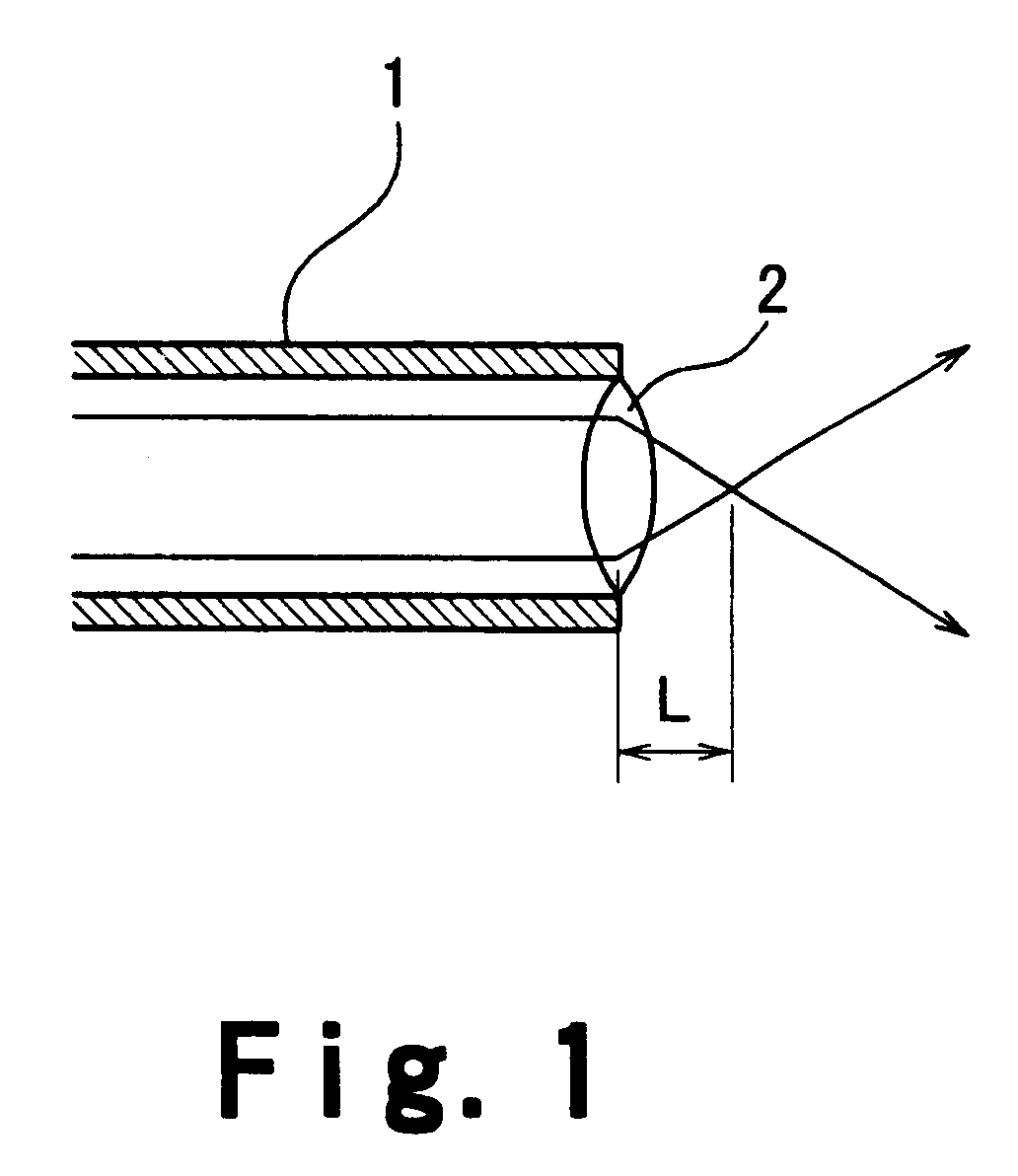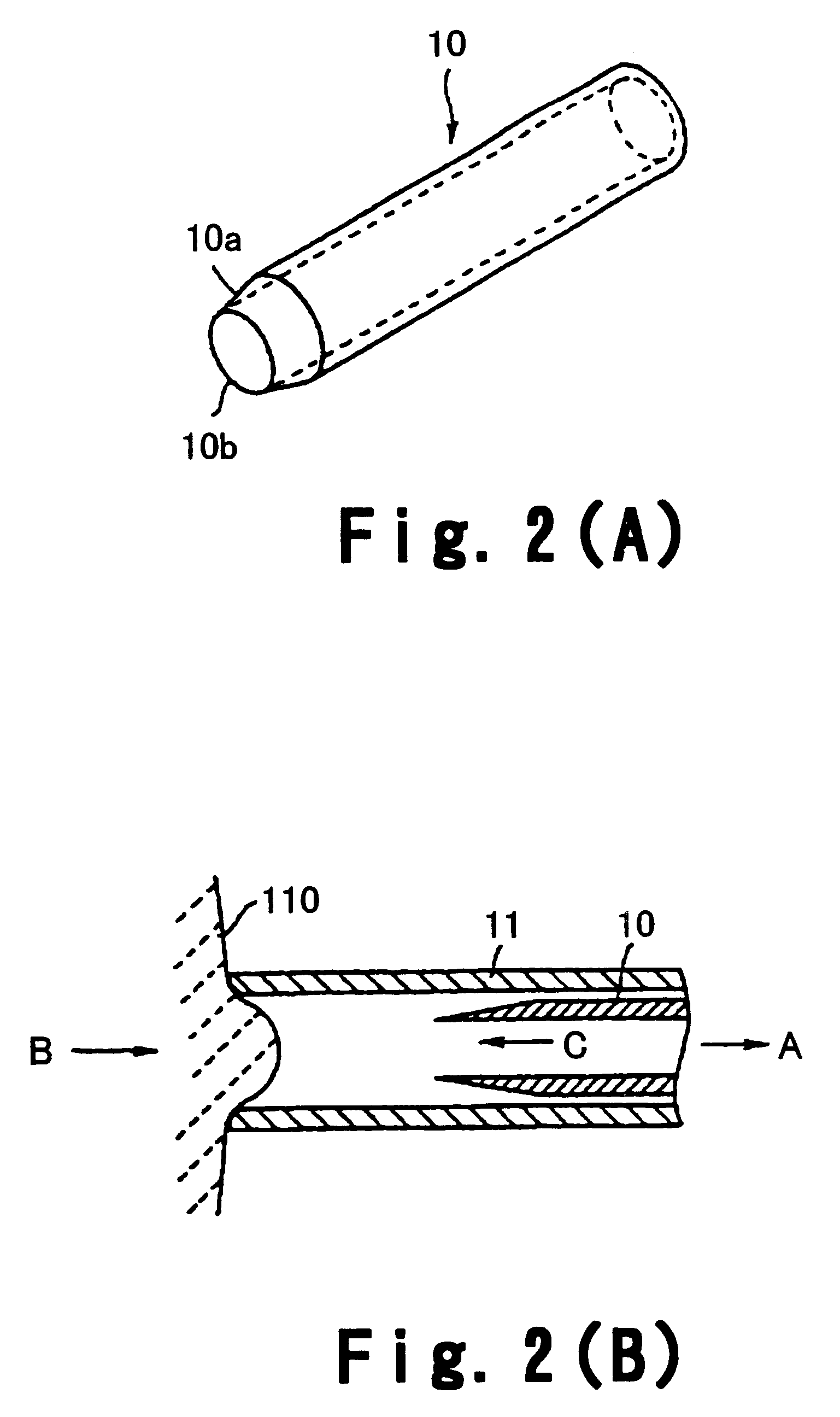Method of crystalline lens replacement
a crystalline lens and lens technology, applied in the field of crystalline lens replacement, can solve the problems of disadvantageous plastic intraocular lenses having a predetermined shape, significant loss of eyesight or even blindness, and unpleasant visual experiences
- Summary
- Abstract
- Description
- Claims
- Application Information
AI Technical Summary
Benefits of technology
Problems solved by technology
Method used
Image
Examples
example 1
[Example 1]
Fifteen parts by weight of polyvinyl alcohol (PVA405; Kuraray Co., Ltd.; viscosity average polymerization degree: 500; saponification degree: 82 mol %) used as a hydrophilic polymer was dissolved in 85 parts by weight of saline (Otsuka Pharmaceutical Co., Ltd.) to prepare a liquid injectable composition to be refilled directly into the lens capsule. The injectable composition was 200 cP in viscosity, 1.358 in index of refraction, and 99% in visible light transmittance. This injectable composition was sealed into an injection cartridge, which was subjected to autoclave sterilization.
A small hole of about 1 mm in diameter was formed penetrating through the lens capsule of a rabbit with a cystotome hand piece shown in FIG. 3. Next, the lens substance was removed almost completely from the lens capsule through the hole by means of phacoemulsification. A 27-gauge needle was applied through the closure formed in accordance with Manufacturing Example 2. The tip of the closure wa...
example 2
[Example 2]
Forty parts by weight of poly(N-vinyl-2-pyrrolidone) (K-15; Gokyo Trading Co., Ltd.; average molecular weight: 10,000) used as a hydrophilic polymer was dissolved in 60 parts by weight of Opeguard MA.RTM. (Senju Pharmaceutical Co., Ltd.) to prepare a liquid injectable composition to be refilled directly into the lens capsule. The injectable composition was 370 cP in viscosity, 1.410 in index of refraction, and 87% in visible light transmittance. This injectable composition was sealed into an injection cartridge, which was subjected to autoclave sterilization.
A small hole of about 1 mm in diameter was formed penetrating through the lens capsule of a rabbit with a light guide having therein an optical fiber bundle of 1 mm in diameter. The lens capsule had previously been stained with an aqueous solution of indocyanine green (Daiichi Pharmaceutical Co., Ltd.; Diagnogreen.RTM. Injection) that optimizes laser energy absorption at a certain wavelength. A semiconductor laser wit...
example 3
[Example 3]
Sixty parts by weight of polyethylene glycol (PEG 1000; Wako Co.; average molecular weight: 1,000) used as a hydrophilic polymer was dissolved in 40 parts by weight of purified watei (Otsuka Pharmaceutical Co., Ltd.) to prepare a liquid injectable composition to be refilled directly into the lens capsule. The injectable composition was 440 cP in viscosity, 1.442 in index of refraction, and 97% in visible light transmittance. This injectable composition was sealed into an injection cartridge, which was subjected to autoclave sterilization.
The procedure in Example 1 was repeated to form a small hole penetrating through the lens capsule of a rabbit. A 21-gauge needle was applied in the hole closure formed according to the procedure in Manufacturing Example 5. The tip of the closure was inserted into the hole. Most of the vitreous body of the rabbit was aspirated. Then, the above-mentioned injectable composition was refilled through the same needle until the lens capsule rega...
PUM
| Property | Measurement | Unit |
|---|---|---|
| viscosity | aaaaa | aaaaa |
| visible light transmittance | aaaaa | aaaaa |
| focal length | aaaaa | aaaaa |
Abstract
Description
Claims
Application Information
 Login to View More
Login to View More - R&D
- Intellectual Property
- Life Sciences
- Materials
- Tech Scout
- Unparalleled Data Quality
- Higher Quality Content
- 60% Fewer Hallucinations
Browse by: Latest US Patents, China's latest patents, Technical Efficacy Thesaurus, Application Domain, Technology Topic, Popular Technical Reports.
© 2025 PatSnap. All rights reserved.Legal|Privacy policy|Modern Slavery Act Transparency Statement|Sitemap|About US| Contact US: help@patsnap.com



